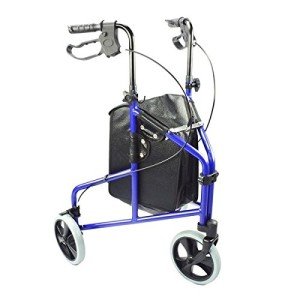In an aging society and among various populations dealing with mobility challenges, rollators have emerged as an essential mobility aid. These versatile walking aids not only provide support but also empower individuals with disabilities to navigate their surroundings with confidence. This article sheds light on the different aspects of rollators, including their benefits, features, types, and maintenance tips.
A rollator is a mobility device designed to help individuals with impaired mobility maintain balance and support while walking. It typically features a frame with three or four wheels, hand brakes, a seat, and a storage compartment. Rollators are distinct from traditional walkers as they provide greater freedom of movement and ease of use, particularly for those who may require frequent breaks while walking.
| Feature | Description |
|---|---|
| Wheels | Available in 3 or 4-wheeled models for better stability. |
| Brakes | Hand brakes for stopping and parking. |
| Seat | A built-in seat for resting when needed. |
| Storage | Basket or pouch for carrying personal items. |
| Height Adjustable | Customizable handle height for user comfort. |
When designed with user needs in mind, rollators provide a multitude of benefits:
| Advantage | Description |
|---|---|
| Freedom of Movement | Encourages exploring environments without constant assistance. |
| Versatility | Suitable for indoor and outdoor use on various terrains. |
| Supportive Design | Ergonomically designed for comfort and ease of use. |
| Social Interaction | Facilitates participation in social activities. |
Not all rollators are created equal; they come in various designs tailored for specific user needs. The following are some common types:
| Type | Advantages | Limitations |
|---|---|---|
| Standard Rollator For Elderly | Stability, comfort | Heavier than some alternatives |
| Heavy-duty Rollator | Enhanced weight support | Bulky, less portable |
| Travel Rollator | Lightweight, foldable | May lack some features of standard models |
| Three-wheeled Rollator | Maneuverable in tight spaces | May be less stable in rough terrains |
| Rollators with Seats | Convenience for resting during walks | Adding weight to the device |
Selecting the appropriate rollator is vital for ensuring safety and comfort. When choosing the right rollator, consider the following factors:

Just like any other mobility device, rollators require regular maintenance for optimal performance. Here are some tips for maintaining a rollator:
Q1: Who should use a rollator?
A1: Rollators are suitable for individuals aged up from seniors to younger adults with mobility challenges due to conditions such as arthritis, stroke, or recovery from surgery.
Q2: How do I determine the right size rollator?
A2: The right size depends on the user's height, weight, and specific needs. Consult healthcare professionals or specialized retailers for recommendations.
Q3: Are there any insurance policies that cover rollators?
A3: Many medical insurance plans, including Medicare, may partially cover the cost of rollators. It's advisable to check with individual insurance providers.
Q4: Can I use a rollator on rough terrains?
A4: Certain types of rollators, especially those with larger wheels or three-wheeled designs, are more suited for outdoor use. However, it’s essential to choose the right model based on the terrain.
Q5: Where can I buy a rollator?
A5: Rollators are available at medical supply stores, online marketplaces, and various retail chain stores specializing in mobility aids.
Rollators for the disabled serve as invaluable tools that promote mobility, comfort, and independence. By understanding the different types available and considering individual needs when shopping, users can find a rollator that best suits their lifestyle. Regular maintenance is equally important in ensuring long-lasting performance. Ultimately, rollators can significantly enhance the quality of life for individuals with mobility challenges, allowing them to engage more actively with their environment and community.
No Data Found!

